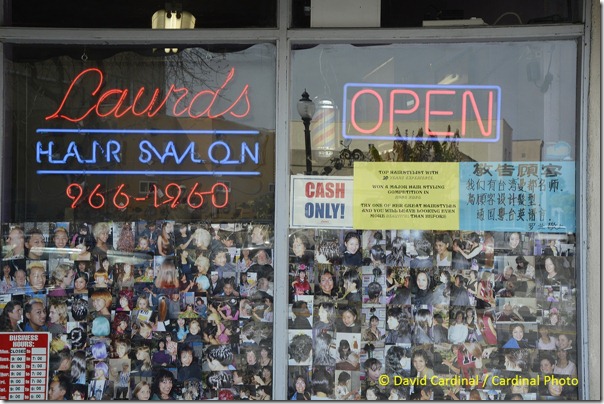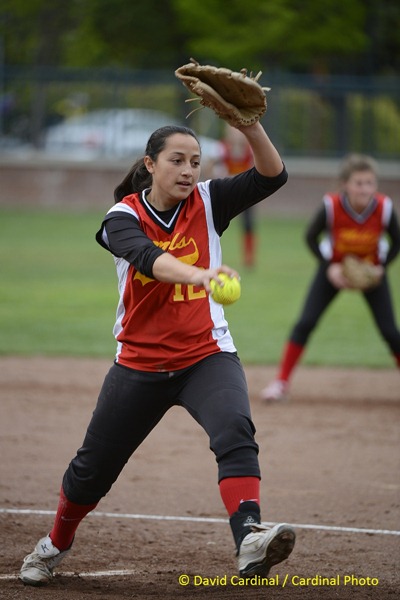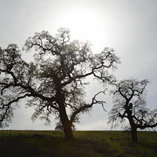- Photo Safaris
- Alaska Bears & Puffins World's best Alaskan Coastal Brown Bear photo experience. Small group size, idyllic location, deluxe lodging, and Puffins!
- Participant Guestbook & Testimonials Candid Feedback from our participants over the years from our photo safaris, tours and workshops. We don't think there is any better way to evaluate a possible trip or workshop than to find out what others thought.
- Custom Photo Tours, Safaris and Personal Instruction Over the years we've found that many of our clients & friends want to participate in one of our trips but the dates we've scheduled just don't work for them or they'd like a customized trip for their family or friends.
- Myanmar (Burma) Photo Tour Myanmar (Burma) Photo Tour December 2017 -- with Angkor Wat option
- Reviews Go hands-on
- Camera Reviews Hands-on with our favorite cameras
- Lens reviews Lenses tested
- Photo Accessories Reviews Reviews of useful Photo and Camera Accessories of interest to our readers
- Useful Tools & Gadgets Handy tools and gadgets we've found useful or essential in our work and want to share with you.
- What's In My Camera Bag The gear David Cardinal shoots with in the field and recommends, including bags and tools, and why
- Articles About photography
- Getting Started Some photography basics
- Travel photography lesson 1: Learning your camera Top skills you should learn before heading off on a trip
- Choosing a Colorspace Picking the right colorspace is essential for a proper workflow. We walk you through your options.
- Understanding Dynamic Range Understanding Dynamic Range
- Landscape Photography Tips from Yosemite Landscape Photography, It's All About Contrast
- Introduction to Shooting Raw Introduction to Raw Files and Raw Conversion by Dave Ryan
- Using Curves by Mike Russell Using Curves
- Copyright Registration Made Easy Copyright Registration Made Easy
- Guide to Image Resizing A Photographers' Guide to Image Resizing
- CCD Cleaning by Moose Peterson CCD Cleaning by Moose Peterson
- Profiling Your Printer Profiling Your Printer
- White Balance by Moose Peterson White Balance -- Are You RGB Savvy by Moose Peterson
- Photo Tips and Techniques Quick tips and pro tricks and techniques to rapidly improve your photography
- News Photo industry and related news and reviews from around the Internet, including from dpreview and CNET
- Getting Started Some photography basics
- Resources On the web
- My Camera Bag--What I Shoot With and Why The photo gear, travel equipment, clothing, bags and accessories that I shoot with and use and why.
- Datacolor Experts Blog Color gurus, including our own David Cardinal
- Amazon Affiliate Purchases made through this link help support our site and cost you absolutely nothing. Give it a try!
- Forums User to user
- Think Tank Photo Bags Intelligently designed photo bags that I love & rely on!
- Rent Lenses & Cameras Borrowlenses does a great job of providing timely services at a great price.
- Travel Insurance With the high cost of trips and possibility of medical issues abroad trip insurance is a must for peace of mind for overseas trips in particular.
- Moose Peterson's Site There isn't much that Moose doesn't know about nature and wildlife photography. You can't learn from anyone better.
- Journeys Unforgettable Africa Journeys Unforgettable -- Awesome African safari organizers. Let them know we sent you!
- Agoda International discounted hotel booking through Agoda
- Cardinal Photo Products on Zazzle A fun selection of great gift products made from a few of our favorite images.
- David Tobie's Gallery Innovative & creative art from the guy who knows more about color than nearly anyone else
- Galleries Our favorite images
Nikon D800 Field Test and Review: Super results from a super sensor
Nikon D800 Field Test and Review: Super results from a super sensor
Submitted by David Cardinal on Sat, 03/31/2012 - 13:18
 I’ve been fortunate enough to get to spend some time with a production model Nikon D800 this week (thanks Adam!) and put it through its paces – shooting sports, scenics, and EDLs. The first thing I noticed about the D800 is that it is one solid camera, almost exactly the same size and weight as the Nikon D700, at 2.2 lbs. Many of the control updates from the D7000 and the D4 have been included, giving the camera a more contemporary design than the D700 which was Nikon’s previous high-end “small-bodied” DSLR...
I’ve been fortunate enough to get to spend some time with a production model Nikon D800 this week (thanks Adam!) and put it through its paces – shooting sports, scenics, and EDLs. The first thing I noticed about the D800 is that it is one solid camera, almost exactly the same size and weight as the Nikon D700, at 2.2 lbs. Many of the control updates from the D7000 and the D4 have been included, giving the camera a more contemporary design than the D700 which was Nikon’s previous high-end “small-bodied” DSLR...
The similarity with other Nikons made it simple to use right out of the box, with the usual custom function tweaks to suit my shooting style (in my case mostly just Raw+JPEG, Adobe RGB, Raw to CF JPEG to SD, ISO / Exposure Comp to 1/2, HP flash sync, Shooting Data, Grid display, File naming and copyright [although I didn’t do those last two on my loaner camera![]() ])
])
Image Quality
Plenty has been written about the amazing 36MP resolution of the Nikon D800. From using it in the field I can safely say that the enthusiasm is justified. Comparing images side by side with those from my Nikon D700 there is visibly more detail in the images from the new model. This grove of Eucalyptus trees is one that I’ve photographed with various cameras over the years, and the D800’s version is head and shoulders above previous ones for detail.
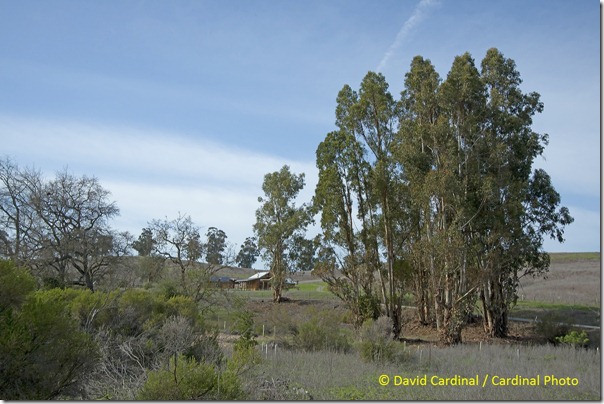
Of course you can’t really see the camera’s resolution from these re-sized images, so at the end
of the review I’ve provided links to some of the original JPEGs from the camera (keep in mind
they are from 12MB – 18MB each).
The new sensor also does a tremendous job with difficult conditions, capturing a remarkable dynamic range in a single frame – as shown in this sample image:
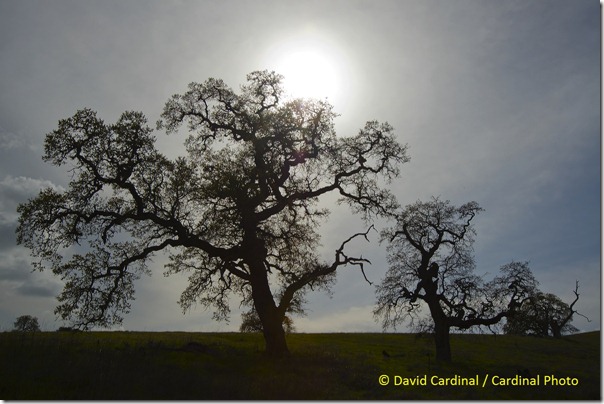
Even shooting straight into a white sky and Sun the D800 does a remarkable job.
Image detail is also amazing, rivaling that of a medium-format camera:
My test shots were mostly just to satisfy myself. More persuasive overall are the all-time record test results from DxOMark, which you can find online. With a score of 95 it beat out even the previous record holder, the flagship Nikon D4. Initially the high resolution of the D800 made reviewers wonder about the image quality, but it is important to remember that at 36MP the pixels are about 5 microns, which is almost exactly the same as those in the very successful D7000. In many ways it might be helpful to think of the D800 as a full-frame “big brother” to the D7000 (obviously with an upgraded sensor and electronics as well for the higher price). In low light it weighs in similarly to the D700, which is excellent but of course nothing special to those who have gotten used to a D3S or the brand new D4, which are both a stop or more ahead.
Sports
The Nikon D800 isn’t designed to be an action camera. With a 4fps native shooting speed, it doesn’t hold a candle to its big brother, the Nikon D4, or even to the cameras it follows, the Nikon D700 and Nikon D300 – especially when those get up to 8fps with a vertical grip. With the spendy $449 MB-D12 multi-power battery pack and vertical grip, the Nikon D800 does move up to a more respectable 6fps in DX mode – but at that point you basically have a nicely souped up Nikon D7000 at three times the cost. Which does make an interesting point. If you think of the Nikon D800 as two cameras in one – a 6fps more than serviceable sports and action camera in DX mode with the grip, and a jaw-dropping studio and landscape camera with 36MP resolution in full-frame (FX) mode – then you’ve got the camera portion of your digital studio covered with one 2.2 lb. unit that costs less than acquiring even one “flagship” camera like the Nikon D4, which will set you back $6,000.
Okay, so that’s all theory. How did the Nikon D800 do in the real world when I took it out to cover a softball game for CBS sports site Maxpreps? In a word, just great. It focused quickly – it has the top of line AF unit from the D4 -- with my Nikon 200-400mm f/4 lens, was easy to use (although I do wish I had a vertical grip for it to make shooting portrait mode quicker and easier), and took truly amazing images. We’ll get to speed (frame rate) later, but first check out an example of what 36MP of quality image can do for you. Softball, like many field sports, covers an area larger than the range of any pro lens. It isn’t possible to be set up to get full-frame shots of the outfielders and action shots on a nearby base at the same time. In the case of this image, the center fielder caught a near home run ball about 200’ away. You can see from the original image that even zoomed in to 400mm, she is very small in the frame (and obviously there is no time to put a Teleconverter on during a play). And the image is partially ruined by the second-base umpire. Typically, I’d just trash the image. But with the D800 I decided to see if I could crop it successfully (click on each image to see 1200 px resized version):
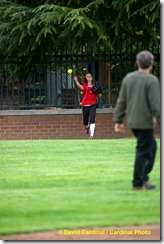
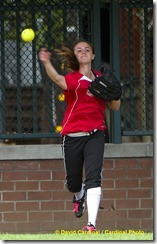
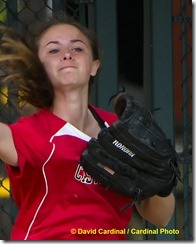
You can see by clicking on the image on the right that even with a huge crop, the D800
image quality really shows through. Obviously that’s no substitute for having the right
lens for the job, but its pretty amazing all the same.
The only, and expected, shortcoming of the D800 for action is the frame rate. 4fps is enough for most situations in most sports, but often the most exciting action benefits from high-speed bursts. I felt the loss of the 8fps I normally get when there were plays at the plate, runners stealing, or even as the ball entered a fielder’s glove, for example. Clearly for field action the vertical grip and DX mode would be the way to go – with 6fps and 15MP, which is plenty for most action photography.
Controls
The Nikon D800 borrows heavily from the updated controls on other recent Nikon DSLRs. The AF switch on the left side of the lens has been upgraded to include a button that allows a dial to move through various AF modes, and the much missed Bracket (BKT) button has been added back – although ironically it made me miss the work-around of setting my DOF preview button to bracketing on my D700. There is also a dedicated video record button near the shutter. That’s a great idea, although for anyone who doesn’t shoot video they may find themselves annoyed that it causes the Mode button to move uncomfortably far from the hand grip.
The 100% – and very bright – viewfinder is also a joy to use. There is an HDR function (like that in the iPhone) which can merge two exposures in one shutter press, but it only works in JPEG modes. I had a hard time getting to the rated buffer size using SD cards (even UHS versions). Shooting Raw+JPEG at full speed is probably only going to work well with the very fasted CF cards on the market, perhaps combined with a fast SD card to store the JPEGs.
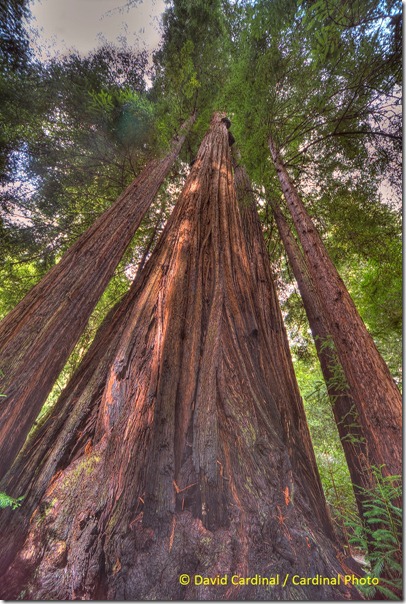
An HDR of the world’s tallest trees, Coastal Redwoods,
Nikon D800 with Sigma 12-24mm pro lens.
(Unfortunately no camera can correct for white skies)
Two Cameras in One
I struggled with the specs for the D800 when it first came out. I really wanted a camera to replace my D700 with the upgraded controls of the D7000 and the upgraded sensor of the D4 (or at least the D3S). I wasn’t looking for anything like the D3X. After using the D800 for a couple days I realized that the right way to look at it is as two cameras in one. At heart it is a $3,000 super-upgraded D3X (which lest we forget is larger, lower resolution, and $8,000!). It also has a clever dual personality which allows it to shoot at up to 6fps with vertical grip in DX mode, making it a super-upgraded D7000 (admittedly only a $1200 camera). Thought of that way, you’re getting $10,000 worth of camera for $3,000 – and all in a single camera, so you don’t need to lug two different bodies around.
A lot has also been written about the difference between the Nikon D800 and D800e. I won’t rehash it here, but will point you to my thoughts on the subject.
Should you buy the Nikon D800 or the Nikon D4?
The obvious question is whether to plunk down your $3,000 on one of these beauties (if you haven’t already) or splurge at $6,000 for the Nikon D4, or sit tight and just envy your friends. Some of my clients have gone for the gold and purchased both, but assuming that’s not in your budget the best way to decide is to look at your shooting needs, identify shots or subjects you can’t capture with your current gear, and then figure out which of these excellent cameras fits your requirements.
You’ll need to determine whether you want the world’s best low-light, high-speed Nikon – the D4 – or you want the highest resolution possible, a smaller camera body, and can survive with a bit of a compromise when it comes to low light or action photography – then the D800 is for you. As always, if we’ve been useful in helping you choose, we’d love it if you’d purchase through the links on our site, as that’s how we fund our free information offerings.
Nikon D800 Video Product Tour
- Log in to post comments

